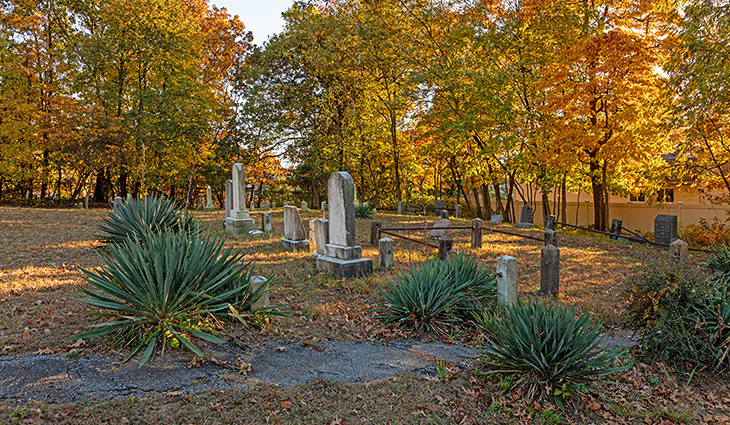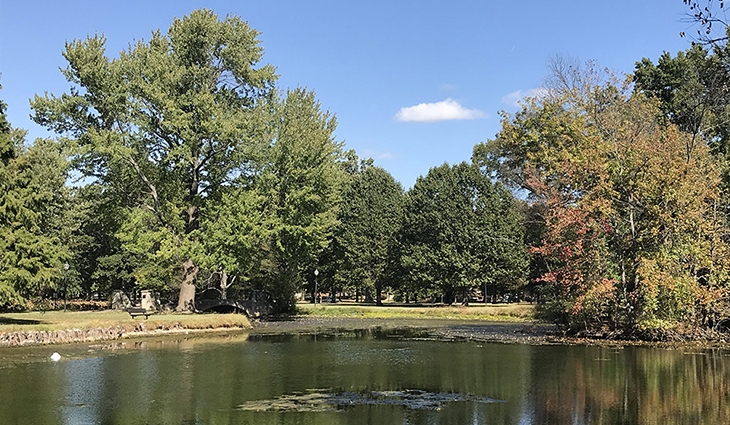With Race and Space Initiative, Hidden Histories Revealed
1/24/2022Leave a Comment

Winks Panorama, Lincoln Hills, CO, 2021. | Photo by Dressel Martin courtesy The Cultural Landscape Foundation
A fascinating group of cultural landscapes associated with African Americans, Hispanic Americans, and Native peoples are featured The Cultural Landscape Foundation’s (TCLF) Landslide 2021: Race and Spacereport and exhibition about nationally significant sites that are at-risk. The Landslide report is part of larger, ongoing Race and Space initiative, launched on November 30, 2020. In addition to the report/exhibition, the initiative just received a $40,000 grant from the National Endowment for the Arts in the Design category of the Grants for Arts Projects.
Landslide 2021: Race and Space is TCLF’s most recent thematic report and includes detailed written narratives illustrated with newly commissioned photography and archival images. Included are: Wink’s Panorama in Colorado, a “Green Book” destination that was one of the earliest resort communities built by and for Black Americans, and for many years was the only one of its kind west of the Mississippi River; Sandy Ground on Staten Island, New York, the nation’s oldest continually inhabited free Black settlement; and, the Shockoe Hill African Burying Ground in Richmond, Virginia, once the nation’s largest burial site for free and enslave people of color, with more than 22,000 interments.
Along with the site entries, Landslide 2021: Race and Space features eighteen short videos – one about each site and five on commonalities or throughlines. The site videos feature people associated with the specific locations, such as Lenora McQueen, a descendant of people buried at the Shockoe Hill African Burying Ground. The five topical videos include: Walter Hood, FASLA, discussing “spatial nostalgia,” Kofi Boone, FASLA, on the subject of “rootedness,” and architect April de Simone on the subjects of “truth-telling landscapes” and “unpacking our perceptions.”
Another throughline, “erasure,” is central to the story of the Shockoe Hill African Burying Ground. Unlike the adjacent Jewish and Protestant cemeteries, which are intact, Shockoe now features highway pylons supporting I-64, railroad tracks and an abandoned gas station. The Virginia Department of Rail and Public Transportation is currently advancing plans to put high speed rail lines though the site, part of the DC2RVA project linking Richmond and Washington, D.C.

Sandy Ground, Staten Island, NY, 2021. | Photo by Barrett Doherty, courtesy The Cultural Landscape Foundation.
As Ms. McQueen recently stated in a letter concerning the Shockoe Hill African Burying Ground:
Much has happened to this landscape. Its form has been altered. Any and all grave markers were removed from its surface. Deep ravines have been filled, streets have been graded. Its surface has been altered to the point of being unrecognizable as a burial ground. But this distortion has not altered its function. It is still a burial ground. Regardless of all that has happened there, this land is still a burial ground. It is still a sacred place that deserves to be honored, remembered, respected, memorialized and protected. It should not be defined by whether or not it has intact graves. This ground may contain intact graves, but it is also full of tons of scattered remains. The many who still rest there, regardless of their form, deserve to do so in peace. My ancestors who were buried there, along with the many thousands of others deserve to finally rest in peace, safe from the worry of further desecration and destruction.
TCLF has joined a broad coalition of advocates including Ms. McQueen, the National Trust for Historic Preservation, Sacred Ground Historical Reclamation Project, and Preservation Virginia, as consulting parties to the federal level reviews pursuant to Section 106 of the National Historic Preservation Act. Evaluating the significance of a site that doesn’t include burial markers and other tangible physical remnants poses a challenge to officials. Among the stated goals of TCLF’s Race and Space initiative is to encourage a broader understanding of the “integrity” of historic sites to be more inclusive of cultural landscapes inequitably affected by erasure and other transgressions.

Chickasaw Park, Louisville, KY, 2019. | Photo by Charles A. Birnbaum, courtesy The Cultural Landscape Foundation.
As mentioned above, TCLF received an NEA grant that will enable the foundation to advance its efforts to expand its What’s Out There database of cultural landscapes to include sites associated with African Americans, Hispanic and Latinx Americans, and others (the thirteen sites featured in Landslide 2021: Race and Space are now added to TCLF’s What’s Out There database and city guides). The NEA Grant also allows TCLF to engage with and amplify the research of leading theorists and scholars including Dr. Andrea Roberts, Assistant Professor of Urban Planning at Texas A&M University and founder of The Texas Freedom Colonies Project, Everett Fly, FASLA, a National Humanities Medal recipient, and Howard University Professor of Architecture Bradford Grant and his students.


.png)
.png)
.png)
.png)
.png)
(1).png)

